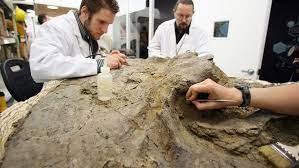Carbon Dating:

Recently a court in Varanasi has rejected a plea requesting carbon dating into the structure (claimed to be shivling) found inside Gyanvapi Mosque.
- Carbon dating is a widely-used method to establish the age of organic materials.
- The dating method is based on the fact that Carbon-14 (C-14), an isotope of carbon with an atomic mass of 14, is radioactive, and decays at a well known rate.
- Developed by American physicist Willard F. Libby.
- The most abundant isotope of carbon in the atmosphere is C-12. A very small amount of C-14 is also present.
- The ratio of C-12 to C-14 in the atmosphere is almost static and is known.
- The changing ratio of C-12 to C-14 in the remains of a plant or animal after it dies can be measured, and can be used to deduce the approximate time when the organism died.
- However, carbon dating cannot be used to determine the age of non-living things like rocks (or Shivlings).




